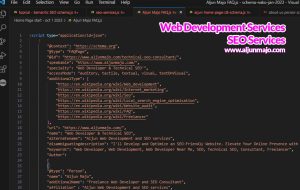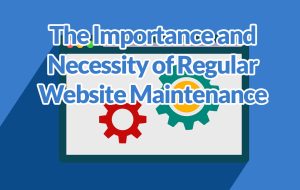The Basics of On-Page SEO: A Beginner’s Guide
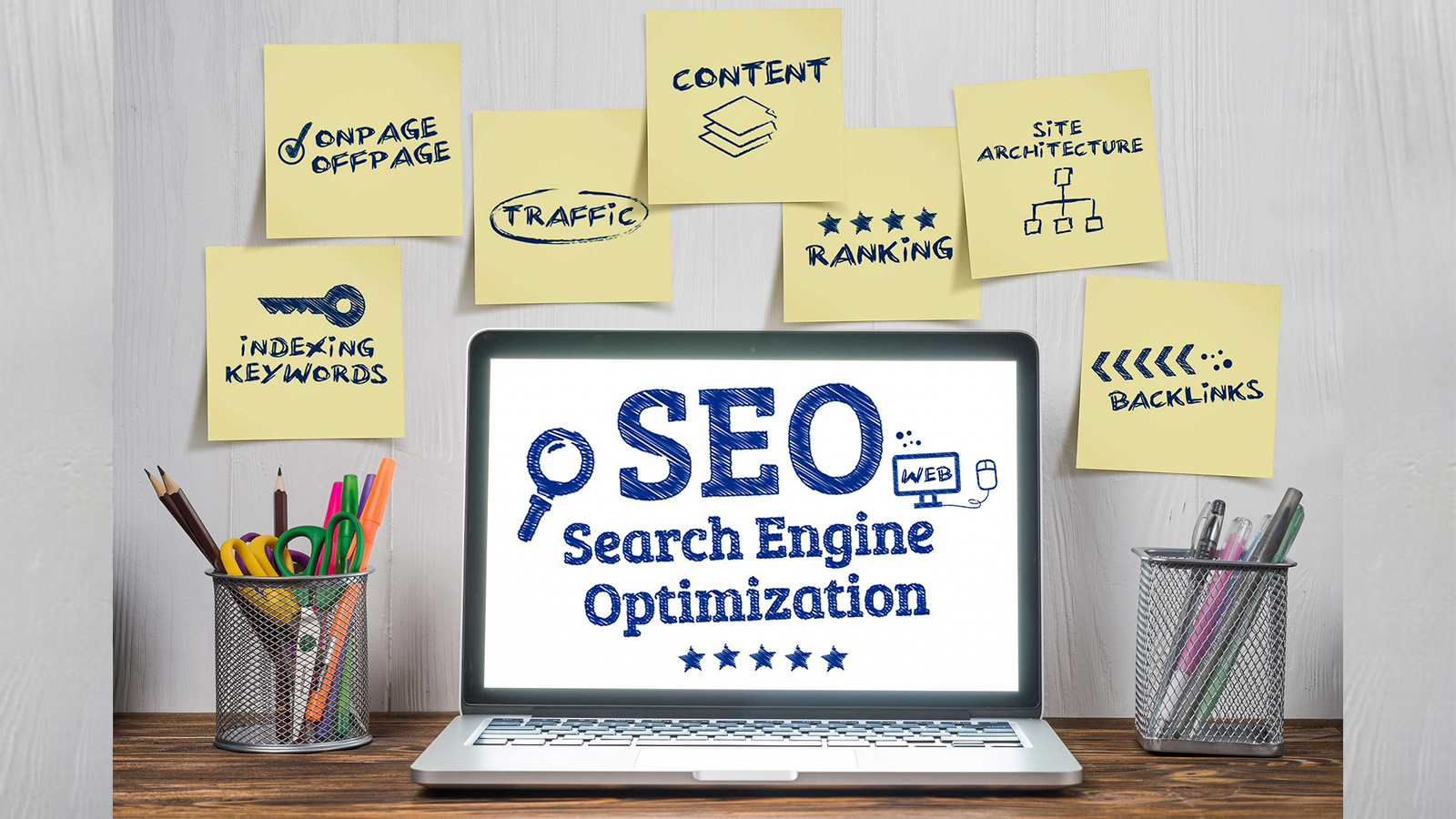
On-page SEO (Search Engine Optimization) is an essential aspect of online marketing. It involves optimizing individual web pages to rank higher on search engine result pages (SERPs) and attract more organic traffic. On-page SEO is a critical part of any SEO strategy, and it requires a thorough understanding of how search engines work and the factors they consider when ranking web pages.
In this article, I will explore the basics of on-page SEO and provide practical tips that you can use to improve your website’s search engine rankings.
Keyword research
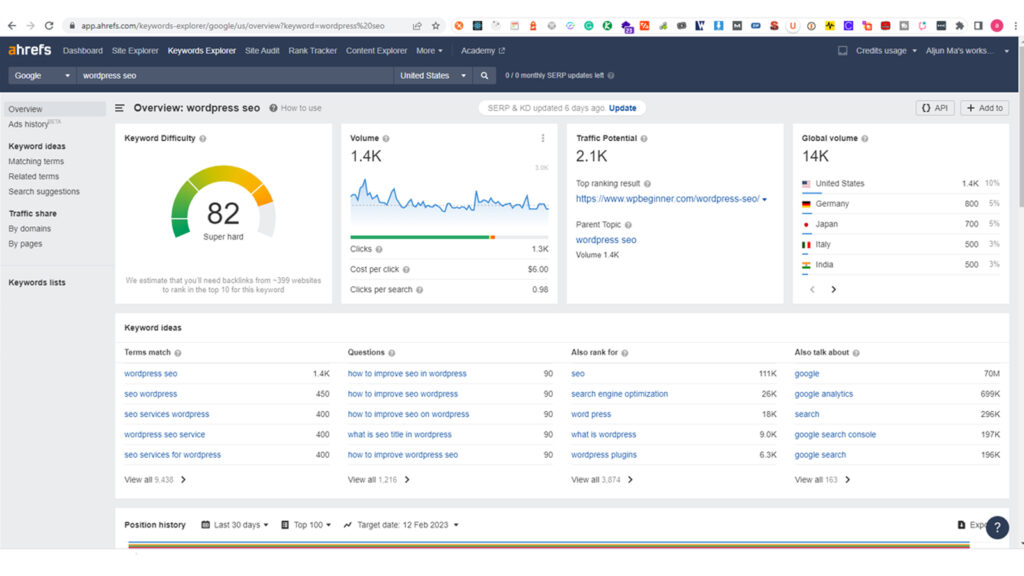
The first step in any on-page SEO strategy is to conduct thorough keyword research. Keyword research involves identifying the keywords and phrases your target audience uses to find the products or services you offer.
You can use several tools for keyword research, including Google Keyword Planner, Ahrefs, and SEMrush. These tools will help you identify high-volume keywords with low competition, increasing your chances of ranking higher on SERPs.
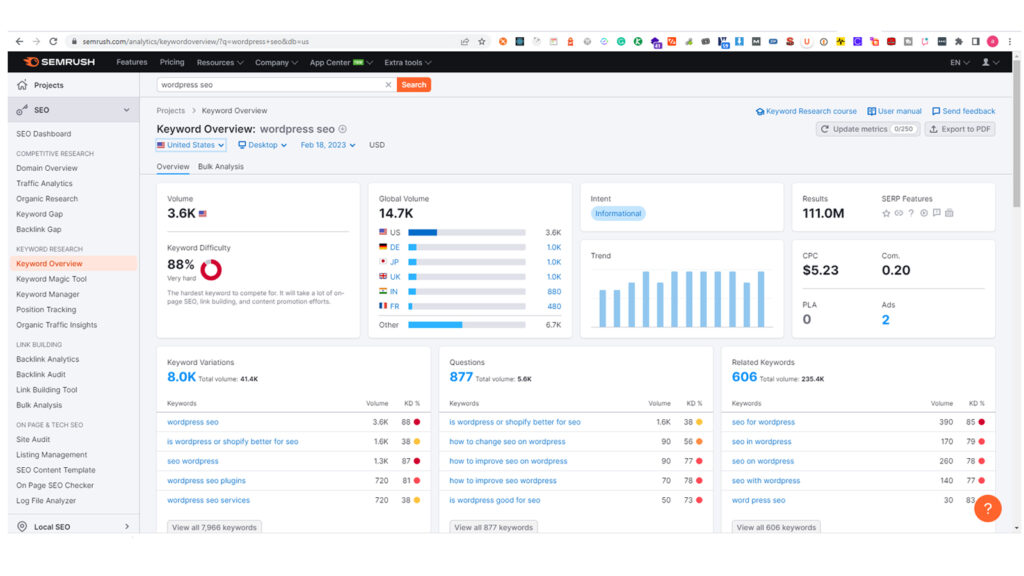
Once you have identified your target keywords, you should incorporate them into your website’s content. However, it is important to avoid keyword stuffing, which can harm your website’s rankings. Instead, aim for a keyword density of around 1-2% to ensure your content is readable and user-friendly.
Title tags and meta descriptions
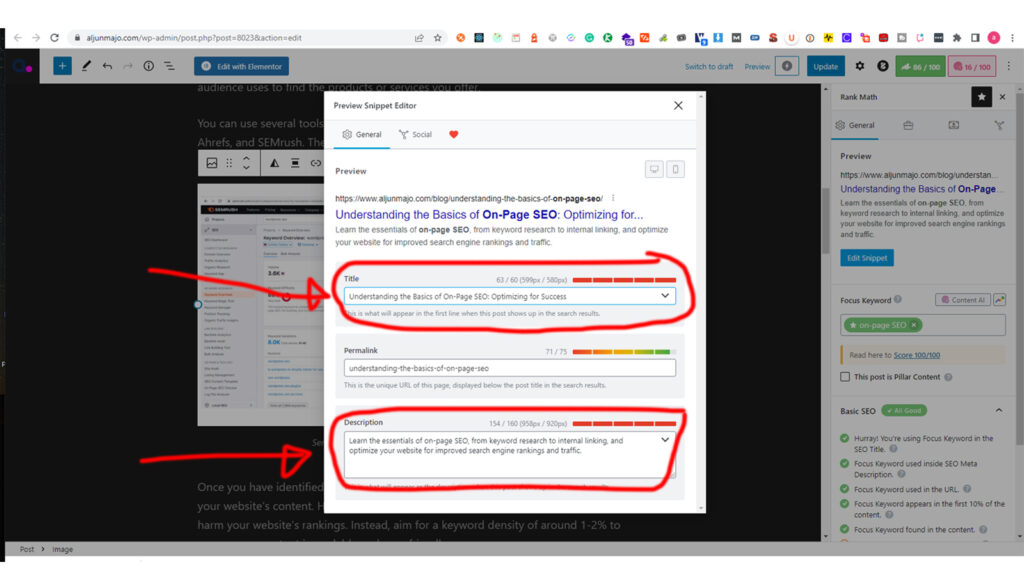
Title tags and meta descriptions are critical elements of on-page SEO. These elements provide a concise summary of your web page’s content and help search engines understand what your page is about.
Your title tag should be around 60 characters long and include your primary keyword. It should also be compelling and attention-grabbing to encourage users to click through your website.
Your meta description should be around 160 characters long and briefly summarize your page’s content. It should also include your primary keyword and be written in a way that entices users to click through to your website.
Headers and subheaders
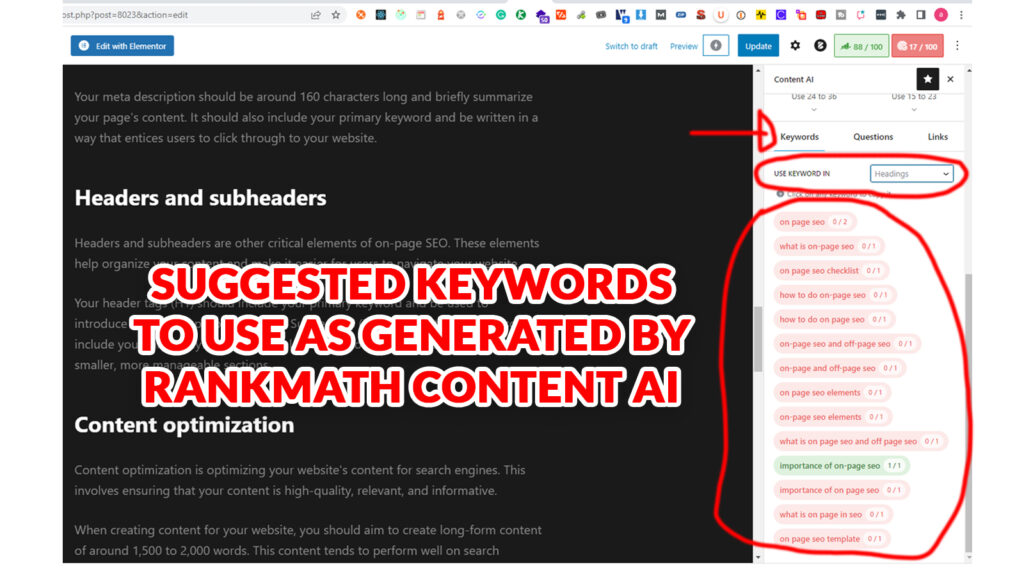
Headers and subheaders are other critical elements of on-page SEO. These elements help organize your content and make it easier for users to navigate your website.
Your header tags (H1) should include your primary keyword and be used to introduce the main topic of your page. Subheaders (H2, H3, H4, etc.) should also include your target keywords and should be used to break up your content into smaller, more manageable sections.
Content optimization
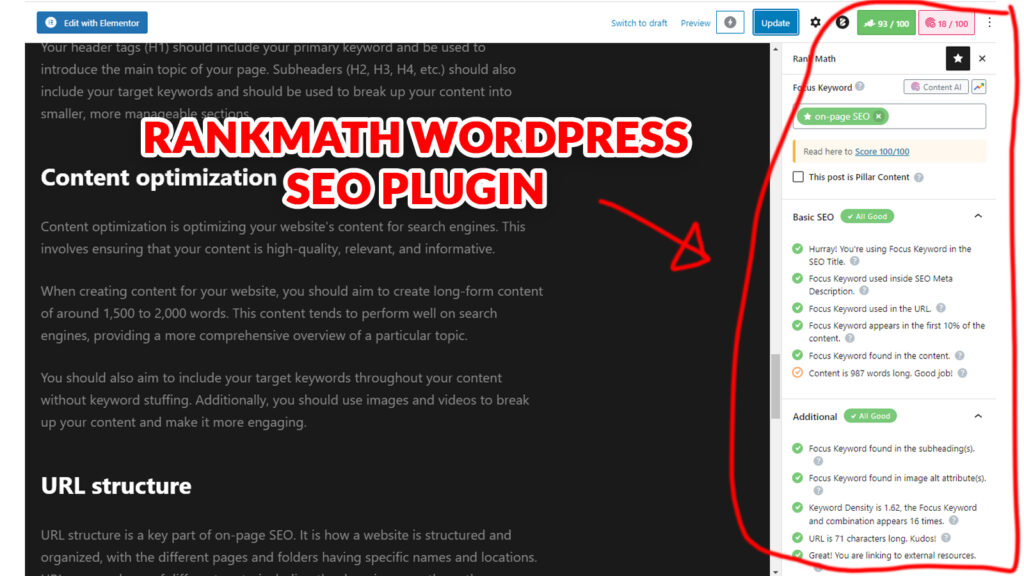
Content optimization is optimizing your website’s content for search engines. This involves ensuring that your content is high-quality, relevant, and informative.
When creating content for your website, you should aim to create long-form content of around 1,500 to 2,000 words. This content tends to perform well on search engines, providing a more comprehensive overview of a particular topic.
You should also aim to include your target keywords throughout your content without keyword stuffing. Additionally, you should use images and videos to break up your content and make it more engaging.
URL structure
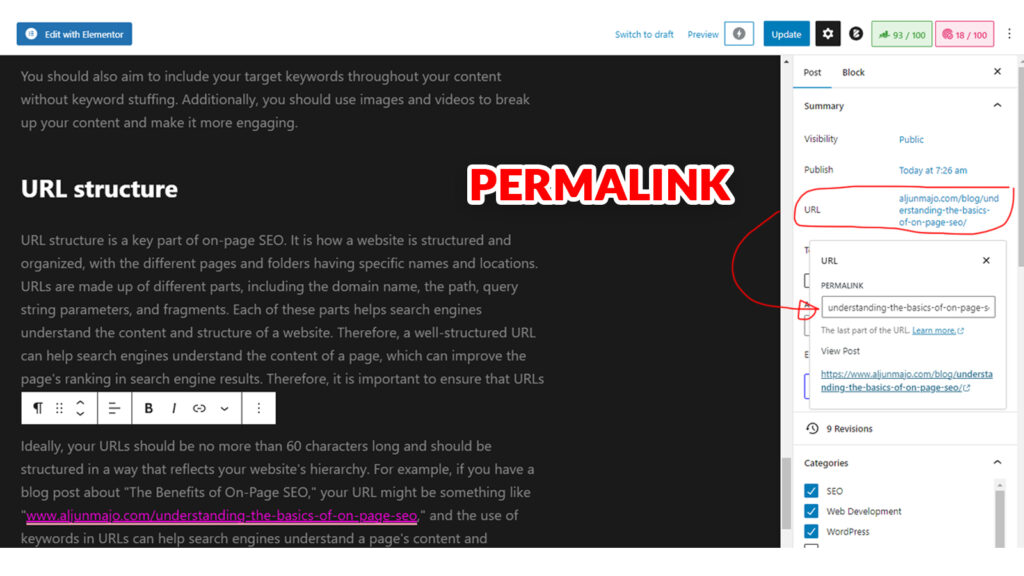
URL structure is a key part of on-page SEO. It is how a website is structured and organized, with the different pages and folders having specific names and locations. URLs are made up of different parts, including the domain name, the path, query string parameters, and fragments. Each of these parts helps search engines understand the content and structure of a website. Therefore, a well-structured URL can help search engines understand the content of a page, which can improve the page’s ranking in search engine results. Therefore, it is important to ensure that URLs are concise, clear, and easy to read.
Ideally, your URLs should be no more than 60 characters long and should be structured in a way that reflects your website’s hierarchy. For example, if you have a blog post about “Technical SEO tips,” your URL might be “https://www.aljunmajo.com/blog/technical-seo-tips/,” and the use of keywords in URLs can help search engines understand a page’s content and relevance page.
Internal linking
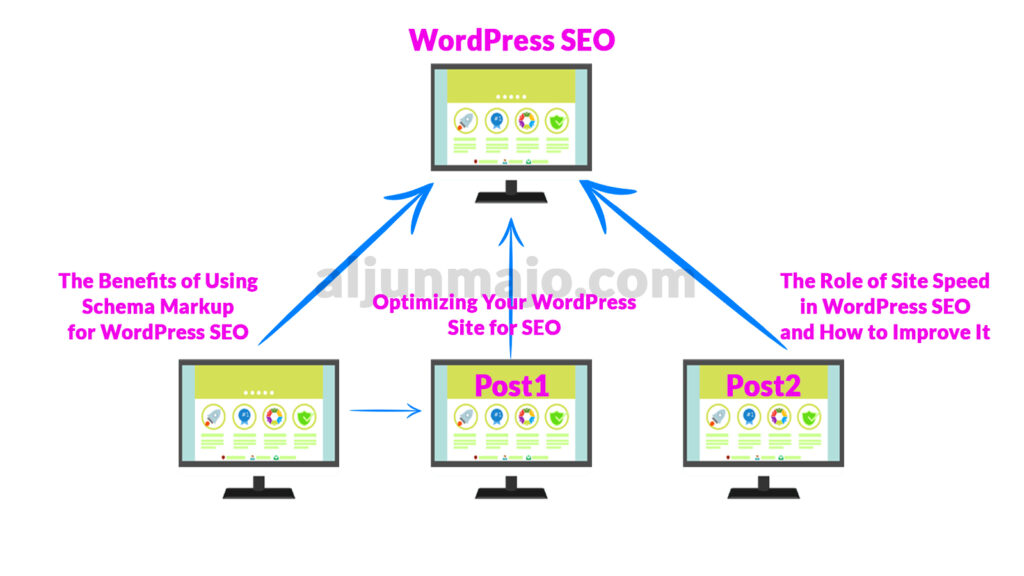
Internal linking is a type of on-page SEO that refers to links to other pages on your website from within your content. This allows search engine crawlers to easily find and index your content while helping visitors navigate your website. Internal links also help build authority and relevance to search engine algorithms and improve the user experience. Internal links help create a clear structure for your website and can highlight important pages or topics. Internal links can also help pass link equity from one page to another, allowing for better rankings for important pages.
Final Thoughts: Importance of On-Page SEO
In conclusion, “Understanding the Basics of On-Page SEO” is a comprehensive and informative guide that provides a detailed overview of the key elements of on-page SEO and how to optimize them for improved search engine rankings and organic traffic. I cover various topics, including keyword research, title tags and meta descriptions, headers and subheaders, content optimization, URL structure, and internal linking. For each topic, I explain what they are, why they are important for on-page SEO, and how to optimize them.
I emphasize the necessity of creating high-quality, engaging content optimized for search engines and users throughout the article.
I also highlight the need to avoid common on-page SEO mistakes, such as keyword stuffing and using generic title tags and meta descriptions. By following the best practices outlined in the above on-page SEO checklist, website owners and content creators can create a well-optimized website that is both user-friendly and search engine-friendly.
Overall, “Understanding the Basics of On-Page SEO” is a valuable resource for improving their website’s search engine rankings and driving more organic traffic. Following the tips and strategies outlined in on-page SEO best practices, website owners and content creators can create a website optimized for search engines and users, leading to increased visibility, engagement, and conversions.
If you need a Web Developer with SEO experience and knowledge, send me a message or buy me a cup of coffee so we can discuss more.

